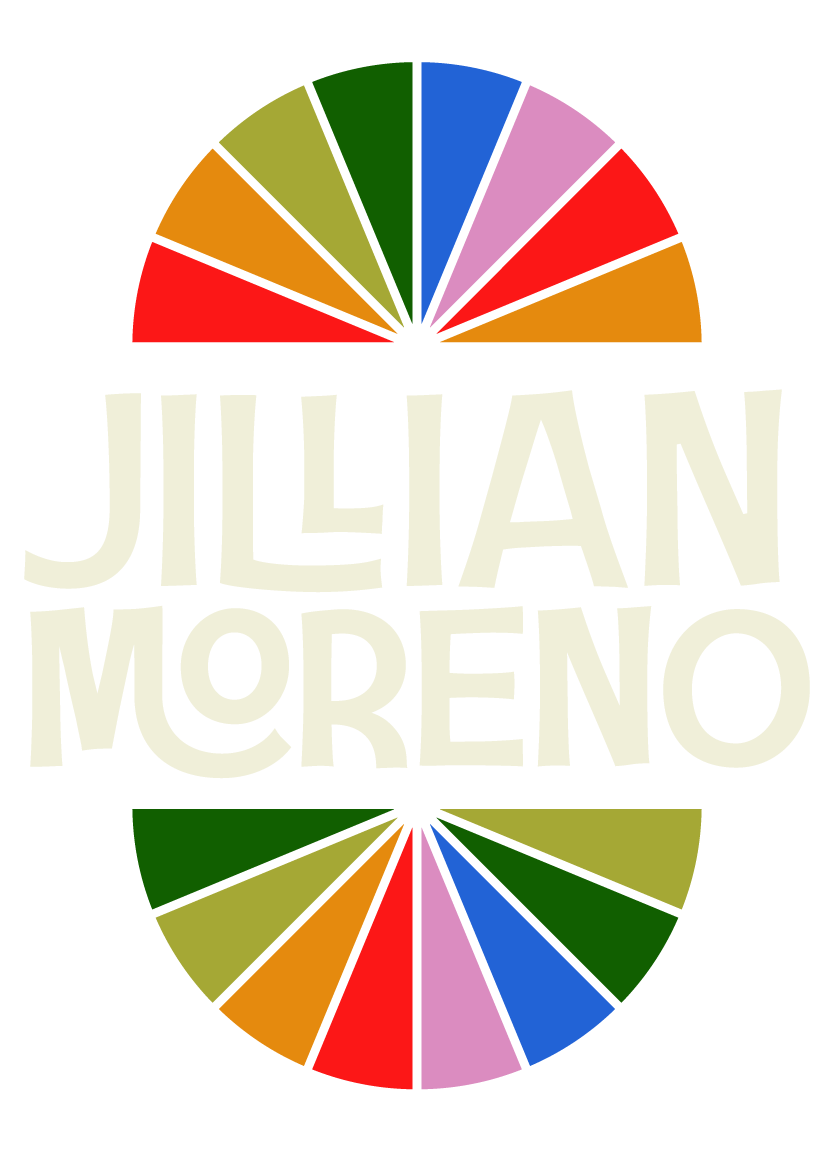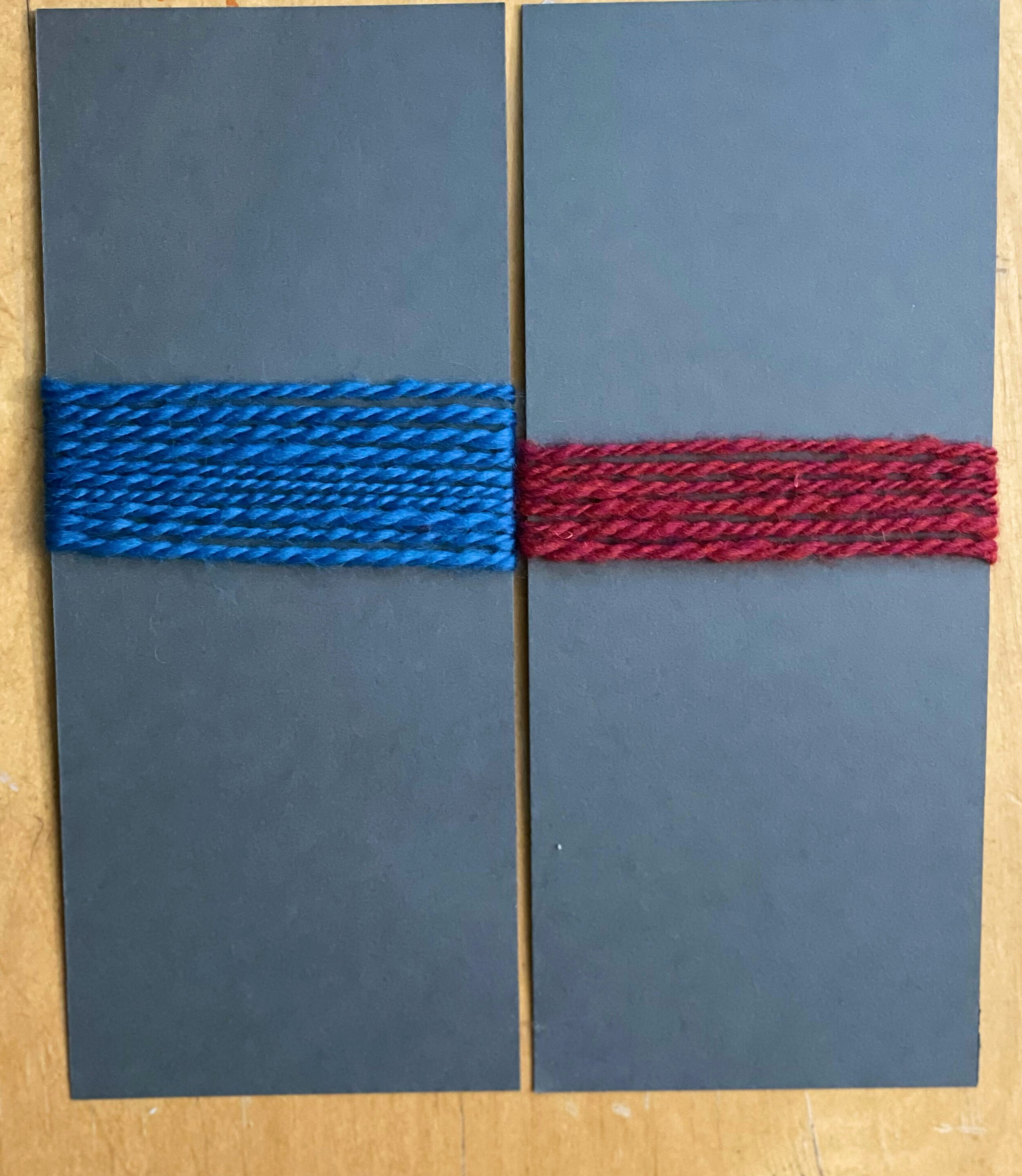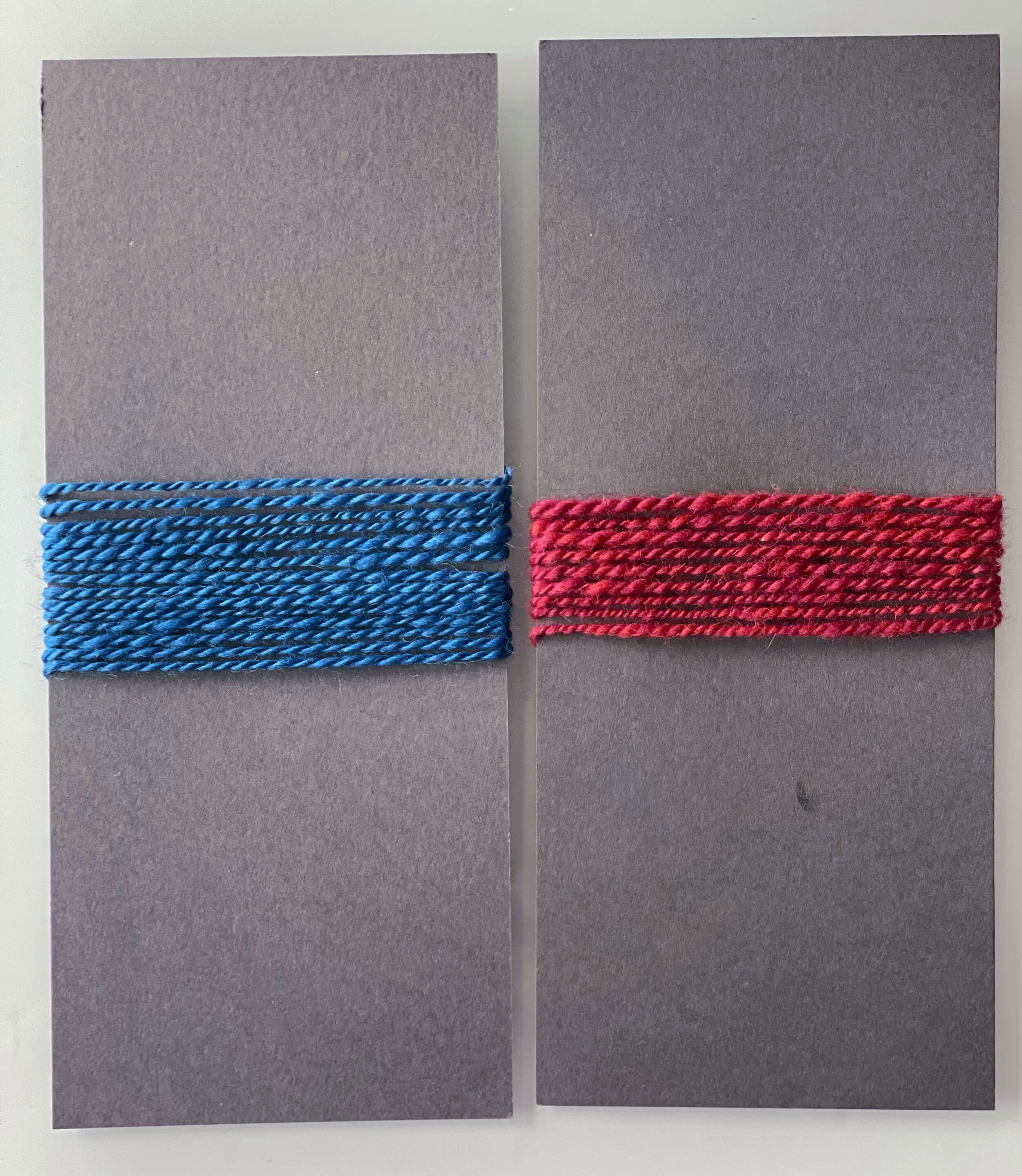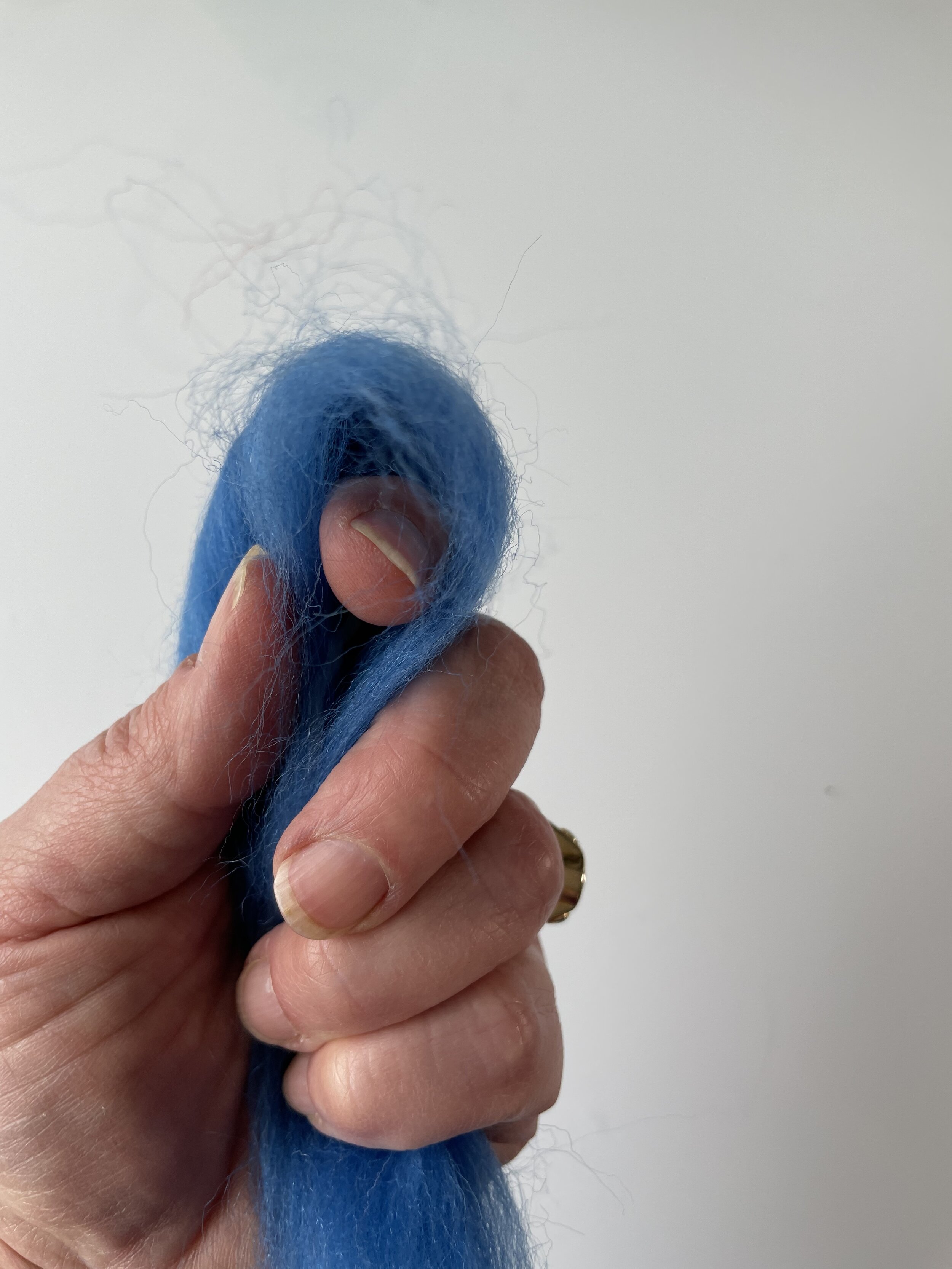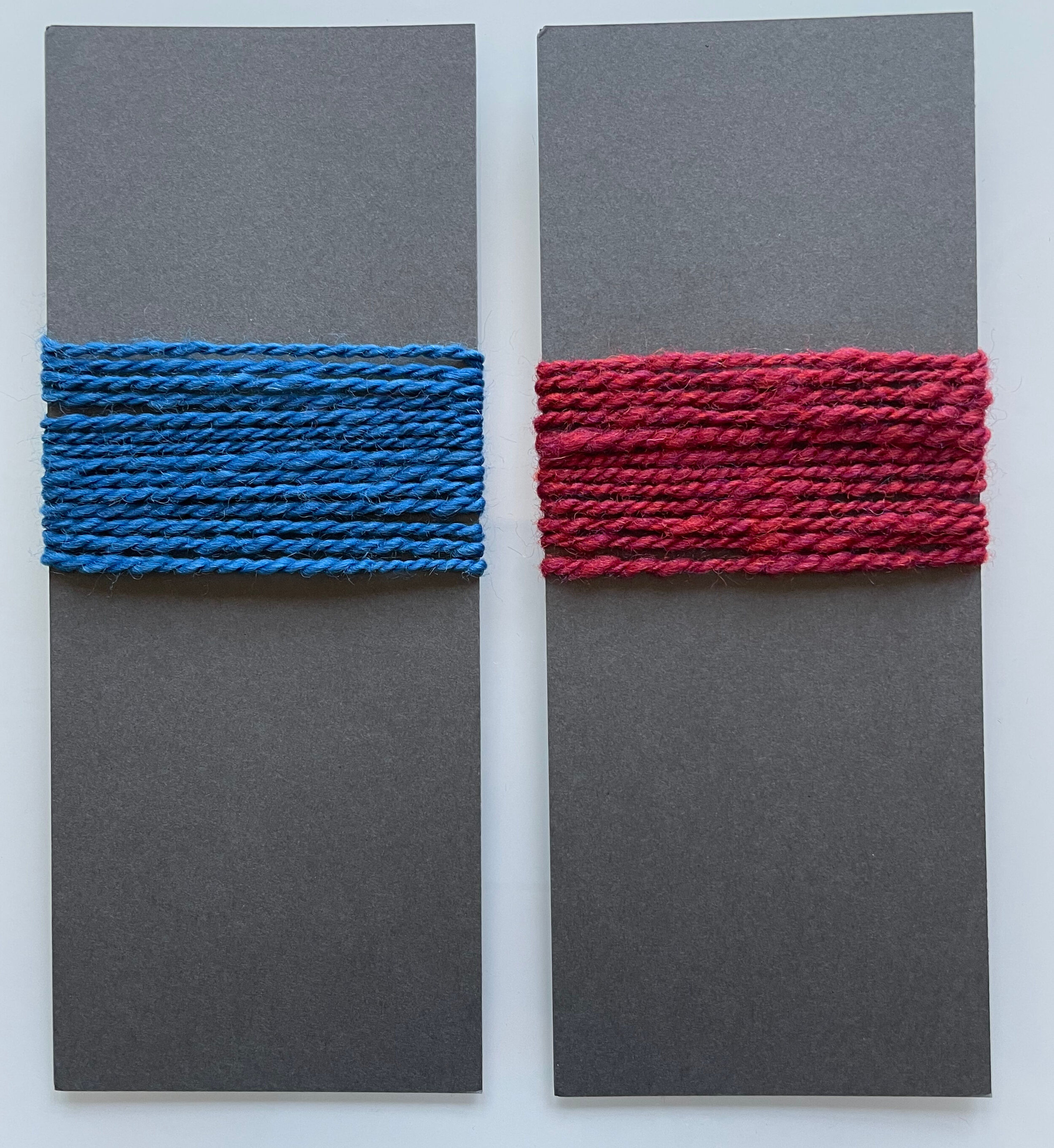I finally had the time to spin more yarn and knit some stockinette swatches. Hilariously, I found one of the biggest reasons I had trouble getting to this part was I am so sick of the colors I've been spinning through the sample along. That is very mmuch how I am, and why I always have more than one project on the go.
So I swapped to lime green combed top and some blaze organge roving and spun four yarns out of each and knit them.
I did the same drafts on both sets. I am leaning deep into woolen (again? as usual?!) so most were a woolen draft.
I used, top row, left to right: a worsted draft, a woolen draft from the fold and bottom row, left to right: a backward woolen draft from the end, and a supported long draw. My samples are chunky to see a little better what's going on with the yarn.
Top: worsted draft. Bottom: Supported long draw
The combed top goes from tidy, with good stitch definition with a worsted draft to down right unruly (for a worsted prep) with the supported long draw.
Allowing air into a worsted prep, makes the yarn lighter, but it’s harder to keep the yarn as consistent, especially with long draw. At least for me!
The air in the yarn makes it softer, making knitted stitches a little blurrier.
My default spin is in between the extremes. I like a shorter backward draft on combed top.
Mostly because I do love spinning hand dyed braids, but you probably know that.
The swatch on the bottom to the left is 100% my default draft/prep combo.
I have been spinning that way as a default for years, but I do adjust my spin for particular projects.
Top row, l to r: worsted draft, awoolen draft from the fold. Bottom row, l to r: a backward woolen draft from the end, and a supported long draw.
I did the same drafts with the roving. You can see once it gets a little air in it it just poofs. Yes, that is a technical term.
When I draft a fresh, airy roving with a worsted draft, it makes me a little sad. I don’t like squeezing all of the air out it. Drafting carded roving worsted also makes any inconsistencies in the preparation really obvious. The nepps, and any veg matter really (and sometimes literally) stick out.
I like any kind of woolen draft with roving, and usually find myself doing a type of medium backward draft, letting all the air in, but having a little more control on size consistency.
Which prep and draft combination was your favorite? Which one surprised you? The roving with a long draw really excited me this time, and I’m not a big long draw fan since it makes my shoulder crabby. Before I had finished spinning and knitting these samples I ordered more of the roving, enough to do a project!
